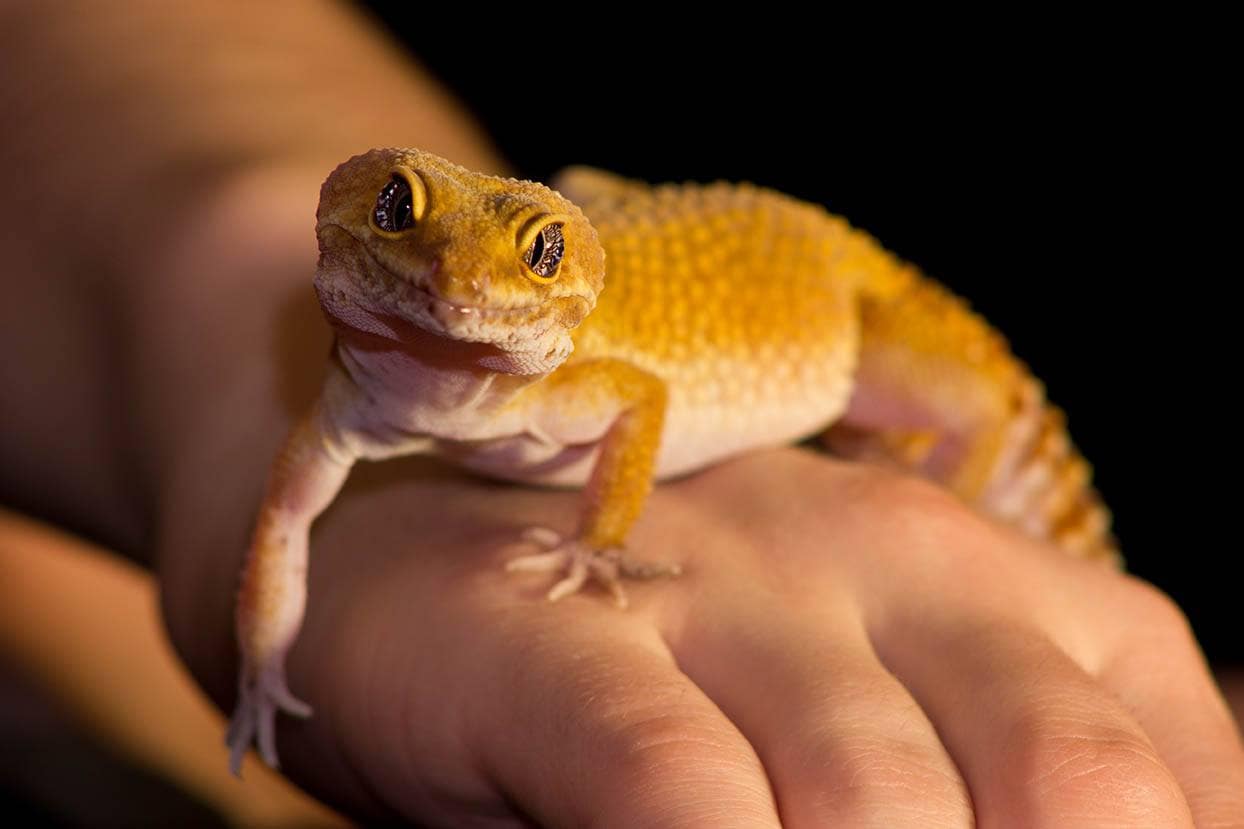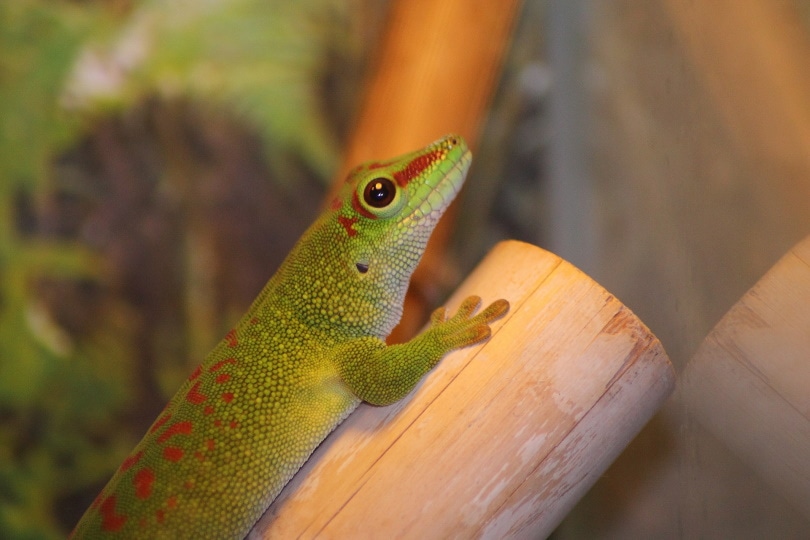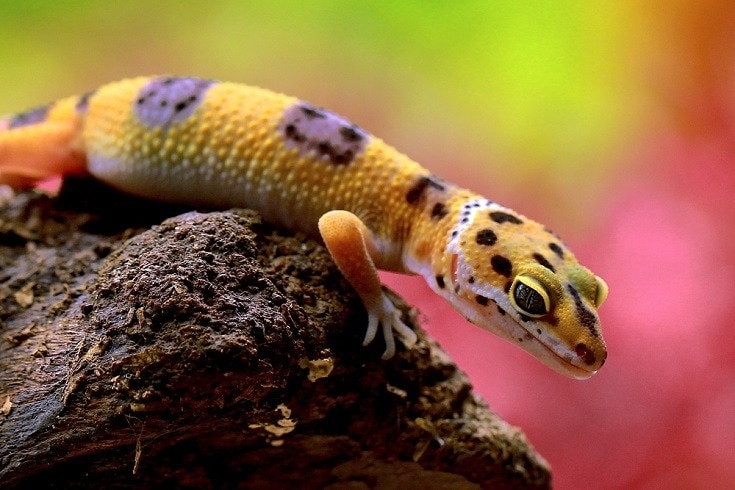
If you’re a reptile lover, owning a gecko can be a very rewarding experience. The leopard gecko is a colorful, docile small lizard that is easy to handle and fun to have. While they are easy enough for beginners because of their temperament, you will have to consider costs before you jump on the bandwagon. From a breeder, a leopard gecko can cost up to $650 and annual expenses fall in the $400 range.
After all, you want a tank of happy, healthy pets with no sudden costs that creep up on you. Being a prepared pet owner is part of the job, which includes any necessary expenses.
Bringing Home a New Leopard Gecko: One-Time Costs
When you start out, it isn’t just about buying a leopard gecko. There’s way more to it than that, especially if you have no existing supplies. You have to consider cages, lighting, heating, substrate, food, and many other factors when it comes to total pricing.
Let’s break it down together so you can get a good idea of exactly how much you’ll have to dish out upfront.

Free
It’s not very likely that you will be able to get a free leopard gecko, but it’s not impossible, either. Perhaps you have a friend who can’t keep their gecko, or someone’s child has lost interest, and they just want to give the gecko to a good home.
If you are lucky enough to have that happen, don’t think that everything will be free. You still have to consider all other factors before accepting responsibility.
Adoption
A lot of times, you can find leopard geckos that have been surrendered at local rescues. Previous owners can give up their gecko for numerous reasons, but you can assume the responsibility.
These geckos are typically observed for any health concerns and rehomed with their cage and supplies. You can always pay more, depending on the facility, but most of the time, you’ll pay in the ballpark of $50 or more.
The same can be said when a person is rehoming their gecko on their own terms. Many people will sell all of their belongings with the gecko. It can be quite a steal as far as price goes since it cuts costs nearly in half.
You can pay between $20 and $350 depending on the morph and what’s included in the sale.
Breeder
Leopard gecko prices from a breeder can vary drastically for a few reasons, but typically, a leopard gecko costs between $20 and $650. Normal leopard geckos with no notable mutations are at the low end of the price scale. But as you get into rare morphs, you can spend a significant amount more.
Breeders charge prices based on rarity, coloration, and markings. The more unique the gecko is, the more you can expect to pay.
An upside to buying from a breeder is that most take the job very seriously, and are highly educated about the species. Quality is extremely important to them and you can expect a healthy specimen from reputable breeders.
Top 7 Gecko Breeds and Their Average Cost
| Normal | $20–$40 |
| High Yellow | $85–$100 |
| Blizzard | $130–$500 |
| Carrot Tail | $130–$350 |
| Tangerine | $300–$650 |
| Hypo Melanistic | $80–$200 |
| Albino | $80–$300 |
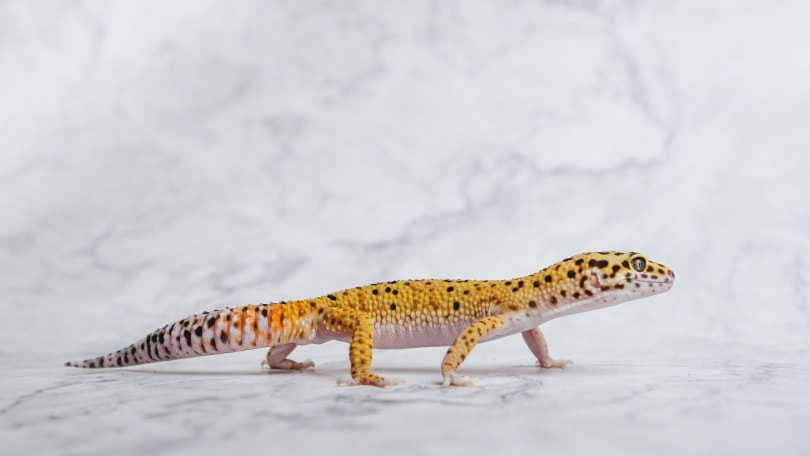
Supplies
When it comes to buying your leopard gecko, the supplies will probably overshadow the price of the gecko quickly. But the good news is, once you have your main supplies, you will only have to replenish a few regularly.
Most supplies are a one-time cost, but it’s still important to know beforehand. You can go at the low or high end of the spectrum, depending on what additives you want in your terrarium.
Leopard Gecko Care Supplies and Cost
| Cage | $50–$150 |
| Substrate | $15–$20 |
| Heat Lamp | $2–$15 |
| Bulbs | $2–$10 |
| Terrarium Décor | $20–$40 |
| Hides | $10–$30 |
| Plants | $3–$20 |
| Food | $5–$15 |
| Thermometer | $6–$10 |
| Hygrometer | $5–$10 |
Annual Expenses
For annual expenses, you can expect to replace some care items like food, substrate, and bulbs. You will also need to set aside any additional cost you could incur—such as needing to replace a faulty heat lamp, thermometer, or hygrometer.
While care costs are pretty inexpensive in the broader scheme of things, you’ll still need to put aside a little cash in case anything malfunctions, breaks, or withers.
You also have to prepare for any emergency visits or vet care, even though this will be rare in most cases.
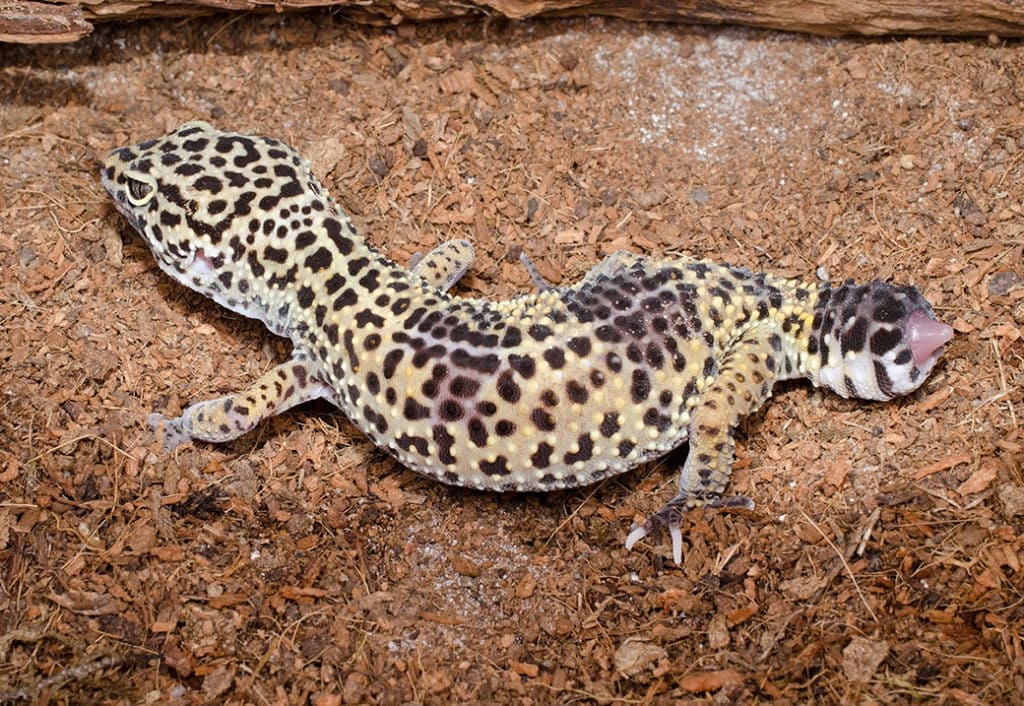
Health Care
When you get a reptile, you might think you’re free from vet visits, but that’s not the case. Even your leopard gecko can run into health issues that require professional treatment and diagnosis.
While you might be able to take care of most issues at home, you need to consider all the costs—just in case.
Check-Ups
Vet check-ups might not be the first thing that comes to mind when you imagine owning a reptile. But many veterinarians actually recommend two check-ups per year. Your vet will do a physical examination, looking for any abnormalities that you might not notice.
They will also do a quick overview of their eating habits, environmental state, and recent history. If they notice anything out of the ordinary, they might request that you come back for additional care or testing.
Of course, you can decide not to take your gecko to the vet unless there is an issue, but it is advised.
Supplements
To keep your leopard gecko in a state of optimal health, they require both calcium powder and vitamin D3 added to their diet. Many owners dip an insect in the powder, so it’s easy to administer.
Do be careful when you give vitamin D3 to your gecko since they can actually have too much. Read dosing instructions carefully to make sure they’re getting the correct amount. You don’t have to offer calcium powder and vitamin D3 every feeding—every other feeding will suffice.
Treatments for Parasites
At an appointment, your vet may do a fecal sample. If there is a presence of parasites, they will generally prescribe a drug to eliminate the parasite from your leopard gecko’s body.
When it comes to cost, you have to factor in the price of the vet visit plus any applicable charges for medication. Parasite infections should happen very infrequently, if ever.

Emergencies
Accidents can happen. You should always anticipate the potential of an emergency vet visit. If you take your leopard gecko in for any kind of imminent examination and treatment, things can get very pricy—like many other medical emergencies.
The total cost will climb depending on your vet’s rates, testing, and necessary procedures.
Medications for On-Going Conditions
You might get lucky and have a leopard gecko who is free of any health issues whatsoever. But there is always a risk that your gecko might be a special case. If so, your vet can prescribe on-going treatment or medication for their particular condition.
This happens rarely, but it is still a possibility. Most of the time, geckos only need short-term antibiotics or drugs for developing conditions.
Food
Your leopard gecko is an insectivore that will enjoy feasting on gut-filled insects roughly every other day. The general rule of thumb is to offer as much as your gecko will eat in one feeding and then skip a day between.
Leopard gecko diets will mainly consist of crickets, mealworms, and cockroaches. Many other insects are compatible, too. However, insects like wax worms and superworms should only be snacks for your reptile since they are high in fat.

Environment Maintenance
You will probably pay at the low end of the spectrum on environmental maintenance costs unless you want to dish out more. Terrarium décor, for instance, can be changed or replaced at your leisure.
Heat sources need to always be on-point since it’s vital to the well-being of your gecko. You’ll have to occasionally change the substrate when it starts to get grimy. Sphagnum peat moss only needs to be changed out if it dies or rots.
| Substrate | $0–$40/ year |
| Bulbs | $10/year |
| Food | $60–$120/ year |
| Décor | $0–$20/ year |
| Sphagnum moss | $0–$20/ year |
Entertainment
Your leopard gecko won’t take much when it comes to activities. Geckos are energetically low maintenance. They do love to explore their cage, but a few branches, hides, and plants will do the trick.
Your gecko needs space to climb around, so offering objects they can latch onto to will make them happy campers.
Total Annual Cost of Owning a Leopard Gecko
When you factor in food, environmental needs, and health, you can expect to pay around $400 every year for your gecko. While this might raise your eyebrows, consider that it only averages a total of $33 per year.
This total is significantly less than, say, a dog—which averages costs of $130 or more per month.

Owning a Leopard Gecko on a Budget
You cannot, and should not, cut corners on everything. Geckos have extremely specific environmental and nutritional needs that must be met to keep them healthy.
If you find yourself running low on cash, or just want ways to cut cost, you always have options to trim the annual Leopard Gecko price. Even though you can’t skimp on the important things (like food or warmth), you can always try these tips to save a few bucks.
Saving Money on Leopard Gecko Care
*Important: Do not feed your leopard gecko wild insects. There is no way to tell if these insects carry disease, chemicals, or other harmful substances in their body. Only buy insects from trusted sources.
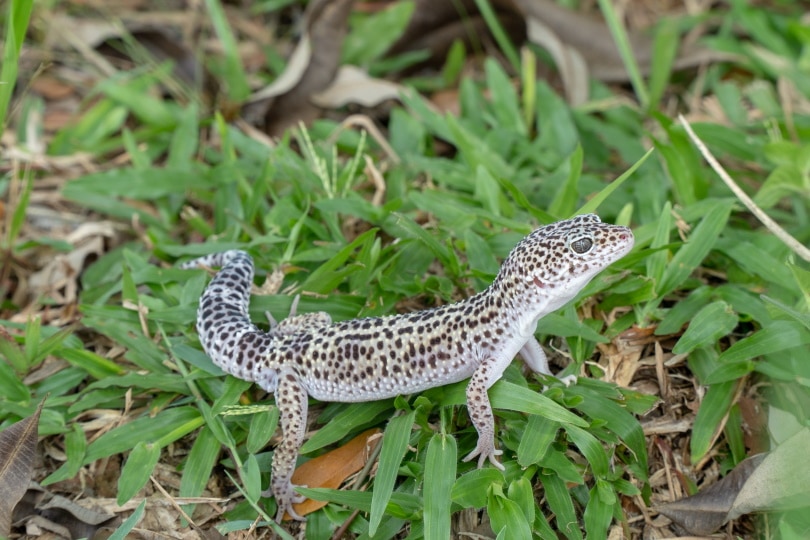
Conclusion
Keep in mind that the bulk of the cost will be upfront, costing around $230+ upfront. Then, you can expect to pay at least $400 annually for general care and upkeep. So, when you break it down month-by-month, you’re looking at an average of only $33 per month.
Even though this seems low, you must consider that your costs will likely be more sometimes, depending on what unexpected expenses accrue. The key is to be prepared for anything, so you aren’t surprised.
Related Reads:
- How Much Are Geckos at Petco? Pictures, Species & Cost Guide
- Do Leopard Geckos Like to Be Held?
- What Do Geckos Eat in the Wild & as Pets?
Featured Image Credit: Opayaza12, Shutterstock





